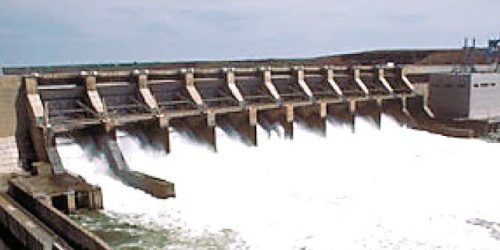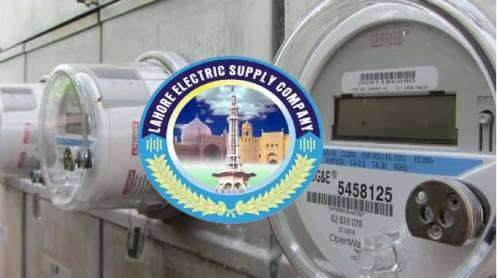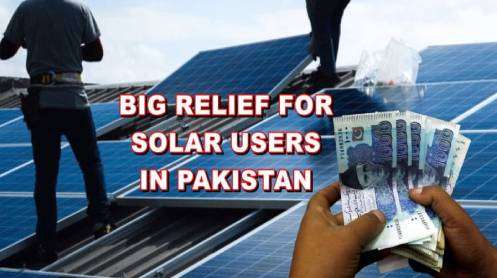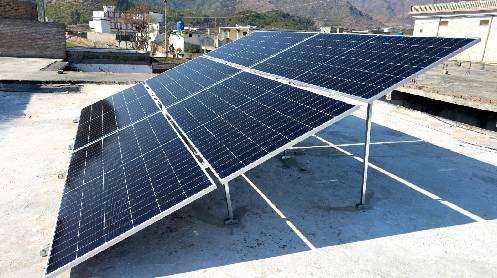A high level panel has recommended transfer of powerhouses of hydropower projects to respective provinces on IPP mode and issuance of bonds/ promissory notes to offset liabilities of Wapda, well informed sources told Business Recorder.
The meeting was held last year in January but its minutes could not be issued as the then Deputy Chairman Planning Commission misplaced papers. Dr Jehanzeb Khan who is now SAMP on Governance Effectiveness claims that finally he has found the notes of the meeting after his departure from Planning Commission.
He regretted delay in approval of minutes. The then Secretary Power, Irfan Ali, had accused the then Deputy Chairman Planning Commission for siding with one specific province and accused the then Secretary to Prime Minister, Azam Khan of tampering minutes of CCI with respect to NHP.
According to minutes of meeting held under chairmanship of the then Deputy Chairman Planning Commission the representative of GoKPK stated that the current mode of payment of NHP through loans is unsustainable. The NHP surcharge, when collected at Nepra rate of Rs.1.10 per/Kwh, should be paid directly to provinces. He suggested establishment of escrow account for this purpose.
Rs3bn needed to remove NJHPP blockage: govt
The representative of GoKPK further stated that CPPA-G was billed separately for each HPP based on units generated. Due to inefficiency of power sector, delta is created between billed and collected amount. Units generated from HPP’s at Rs. 2.25 per/Kwh were sold at Rs. 17 per/Kwh.
The NHP surcharge was an interim arrangement by Nepra. It was not full payment of NHP as envisaged in the Constitution. He explained that Wapda bills average HPP tariff of Rs. 2.5 per/Kwh + Rs. 1.10per/Kwh NHP is determined by Nepra. Due to mismanagement of the power sector GoKPK is not being paid the full NHP. He stressed that the Committee’s mandate is not to open the Kazi Committee Methodology (KCM) and Constitutional provisions.
The representative of KPK also asserted that if Wapda is to invest in projects through equity, then the decision needs to be taken by Council of Common Interest (CCI).
Representative from Punjab suggested that new ideas should be explored to find a sustainable solution to the issue. The hydro-electric power stations, situated in the provinces, e.g., Tarbela in KPK and Ghazi Barotha in Punjab, could, perhaps, be transferred to the respective provinces. Treated as IPPs, the issue of NPH can be permanently settled.
CPPA-G explained that GoKPK gets paid on priority, on collection of dues. CPPA-G explained that power is purchased from various sources at a different rate which leads to a basket price. Unfortunately, collection is only 80 to 85% of the billed amount (including subsidies from Finance Division). Delta of 15 to 20% is created every month which hits everyone. He further revealed that the Government of Pakistan (GoP) did not transfer 100% of NHP surcharge to consumers.
Representative of CPPA-G presented calculation for the next 10 years. He explained, that at present rate of NHP at Rs. 1.10 per/Kwh, collection during next 10 years would be Rs. 65 billion. However, with annual indexation it would go up to Rs. 128 billion. This is without any inefficiency in the system. If inefficiencies are included, then it would increase by 25%. Every new generator would alter these calculations.
The representative of Wapda noted that details about payments of NHP to GoKPK every month have been provided. He further added that they are regularly paying Rs. 3 billion/ month to GoKPK. Payment is not being made to GoPb; however.
The representative further noted that power of approximately Rs. 5 billion every month is sold as energy to CPPA-G. He explained that O&M, equity and debt is part of tariff, in which 95% tariff is on fixed and 5% is variable. He stated that ECC, in 2019, decided that Wapda should go to the market for loans to finance their development projects. Wapda raised Rs.500 billion loan/ bond, which is to be repaid. Hydro-electric powerhouses have produced 32 billion-units. The Weighted Average Cost of Capital (CACC) of tariff comes to Rs. 17 per/Kwh because of cheap hydro-electric power.
The tariff allows O&M, equity, and loan payment. Wapda is allowed 80:20 for investment in its projects. Due to IMF conditions, government is not providing guarantees for large project financing. He agreed with the suggestions of GoKPK to establish separate escrow account, adding that NHP loan on Wapda books results in higher rate from international financing institutions, as it is considered a bad loan.
Member Energy, Planning Commission stated that KCM was based on major share of hydro in the fuel mix for power generation and thus based on the backward calculations from the end consumer tariff. Now the hydro-electric power share is only around 30%. He further stated that there is a need to reassess the methodology of NHP calculation.
He further explained that as per KCM formula for calculating NHP, an annual payment of around Rs 500 billion must be made to the provinces. For the year 2021 the amount is estimated to be Rs. 495 billion, which is likely to go up to Rs 621 billion by 2030. As per CPPA’s projection, a tariff increase of Rs4.5/Kwh is required every year in average consumer tariff.







